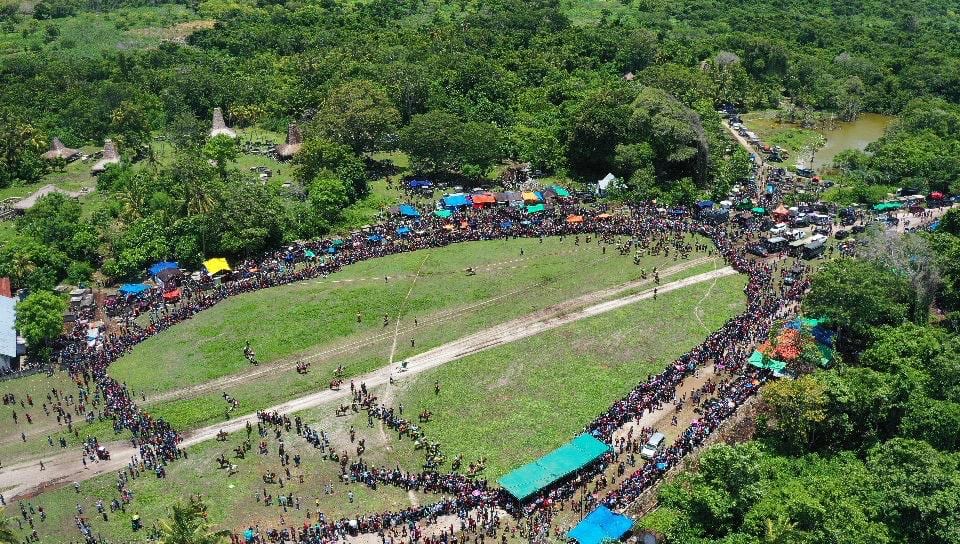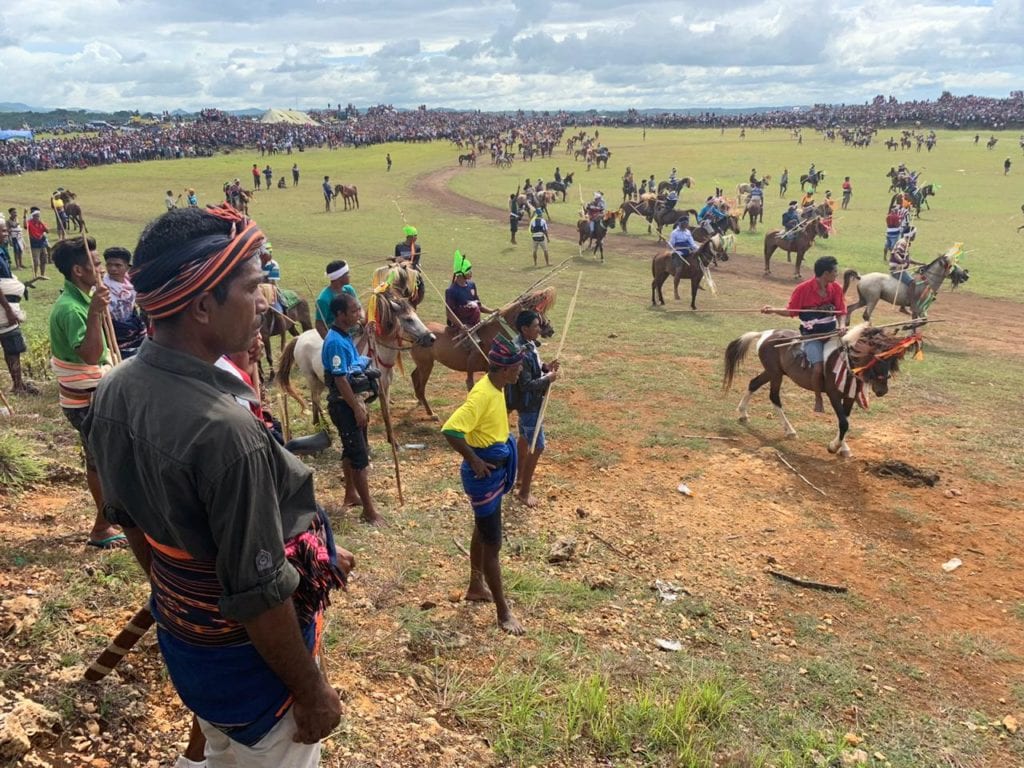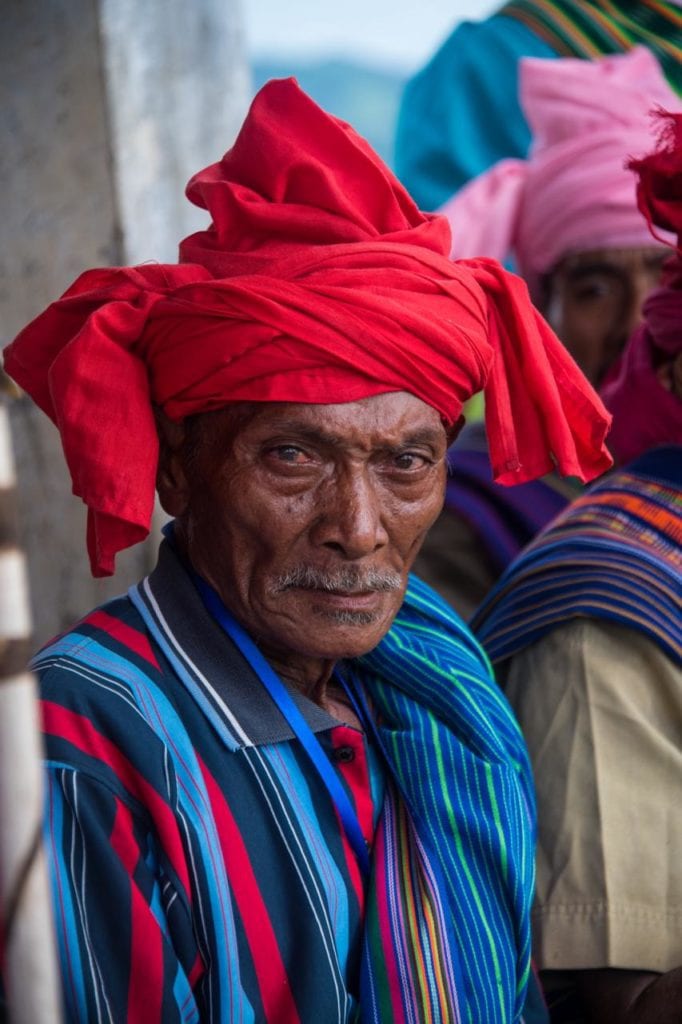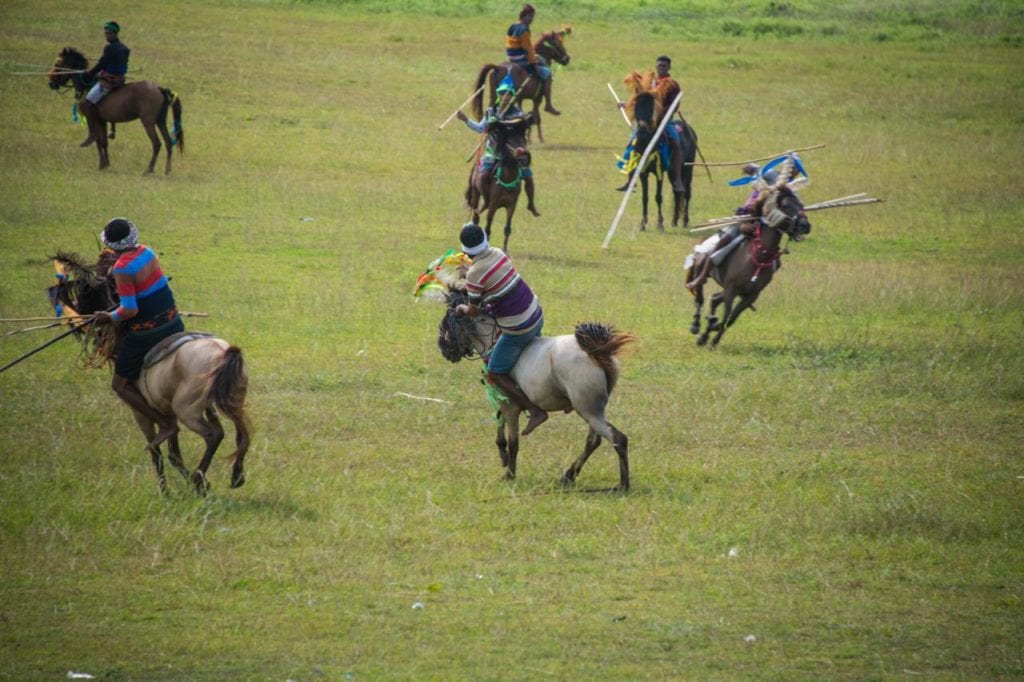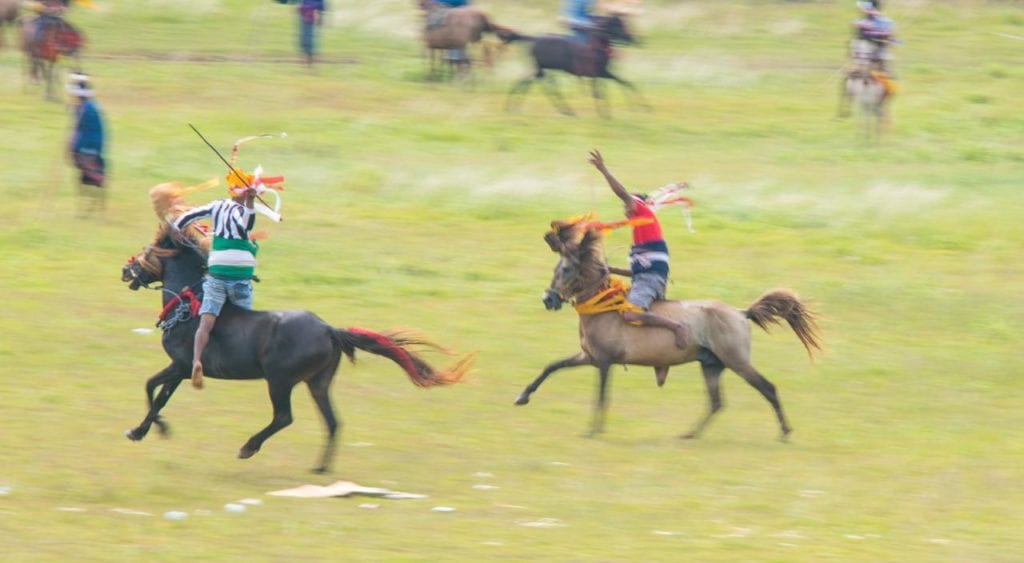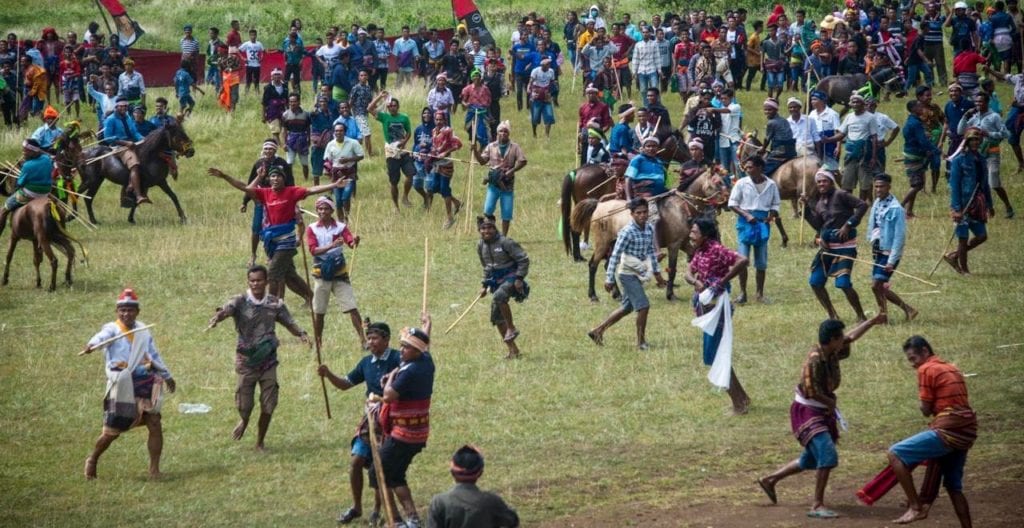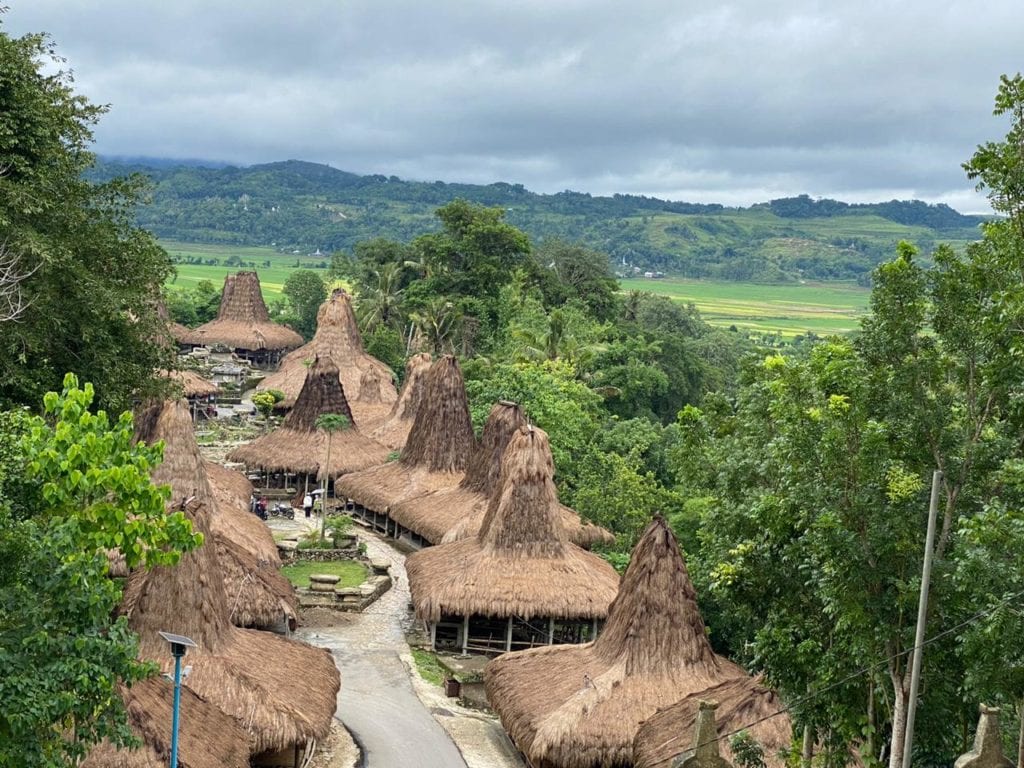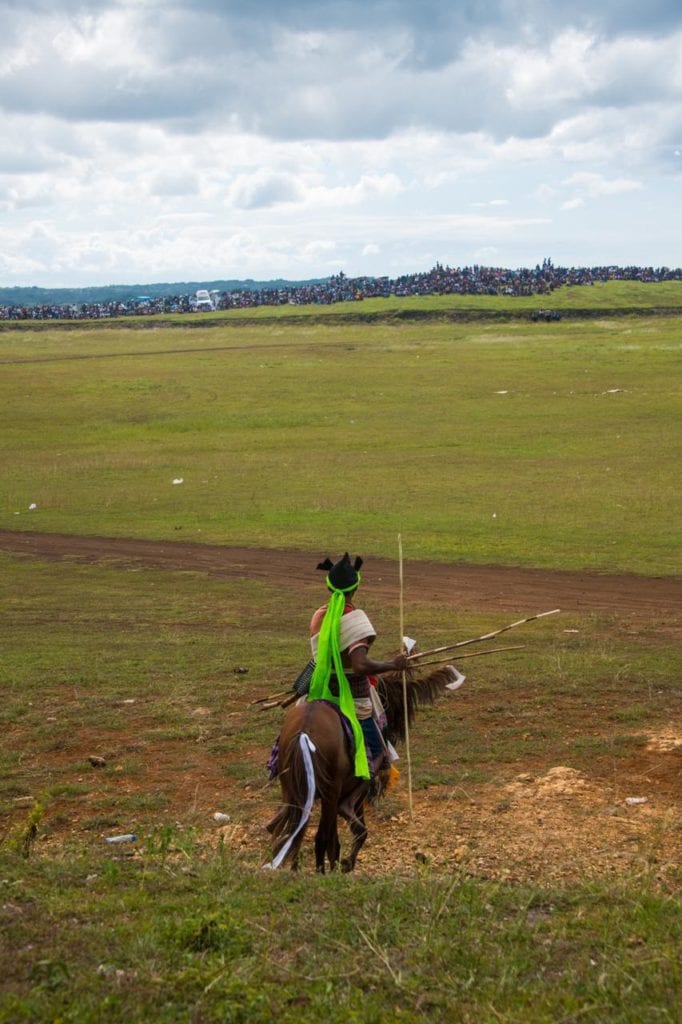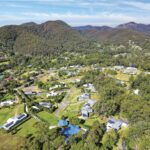TRAVEL
“There Will Be Blood.” The Rough and Tumble of Sumba’s Pesola Festival.
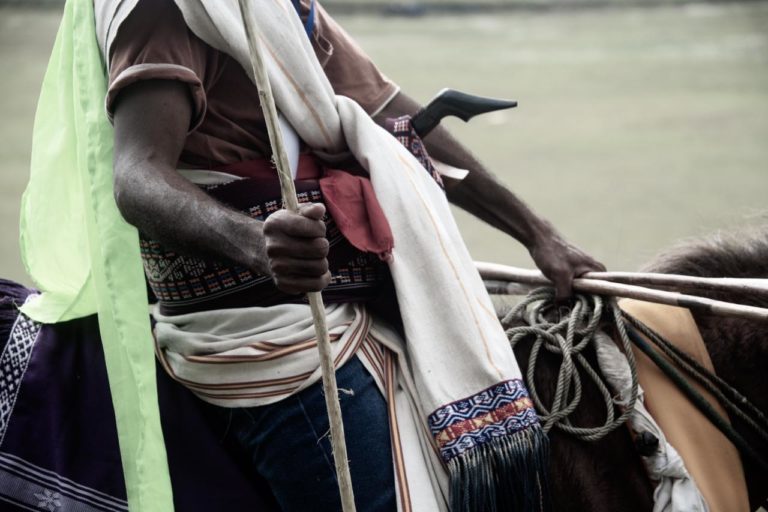
WORDS: Paul v Walters PHOTOGRAPHY Paul v Walters
Sumba is a large, squat – shaped island that appears to have tumbled out of the southern Indonesian archipelago to sit alone, not far to the north of the continent of Australia. Here there are no steeply terraced rice fields, no towering volcanoes, ornate temples or iconic landmarks so prevalent on other islands in this sprawling and diverse country.
In the late 1800s, Sumba was a favoured trading stop for Dutch sailors who, over a hundred years or so systematically stripped and clear-felled virtually all of the Sandalwood trees that covered most of this idyllic paradise and carted this highly prized natural resource back to Europe to be sold.
The result of the plunder turned the east of the island into one of rolling grassland toasted brown by the merciless southern sun during the long, hot dry season.
The west of the island seems to receive the lion’s share of the rain with the low hills verdant green with rice fields stretching almost to the horizon.
From an elevated position, the undulating terrain reminds one of the Meseta Central in Spain and, like its Spanish counterpart it developed into good horse country and jousting has become a favourite sport.
When leaving the island’s only airport, the poverty palpable if the roads are any indication as many have deteriorated to the point where on some stretches they become a series of potholes connected by thin slithers of bitumen.
In the rag-tag towns, passing mini busses, cannibalized motorcycles, cars and horses throw up clouds of dust that drifts into the open-fronted stores to settle on the vast array of goods within. These dimly lit emporiums are virtual Aladdin’s caves, each packed to the rafters with sacks of rice, lurid green plastic chairs, beach balls, flip flops, building materials, cans of tuna and condensed milk, giant bottles of soy sauce, motorbike tyres, corrugated roof tiles, in fact, everything that a remote villager might need on an infrequent trip to the ‘city’.
Like most of the impoverished areas of this vast county, it is the people who make each region sparkle and Sumba is no different. Ready smiles are a given and children walking to far-flung schools in ill-fitting footwear are quick to call out a cheery ‘Hello Mister” at the top of their collective voices.
I have come to Sumba to experience the Pesola tournaments that take place all over the island during the rainy months of February and March. The origin of why and when this festival happens seems to be open to interpretation depending on which district or village one visits.
A detailed description was told to me while seated on the bamboo terrace of a village house with its iconic thatched, conical-shaped roof soaring fifty or sixty feet above us. Some theories suggest that the arrival of the sea worms that make their way ashore at a certain time each year is a sign that it is time to harvest and therefore blood must be spilt on the fields.
Another legend has it that a certain village head took off one day on ‘clan business’ and failed to return. His wife, thinking he had died took another lover in a rival village. After several years the husband unexpectedly returned and was bereft to find that his spouse had left him. A Pesola was arranged to try and soothe his loneliness.
So, who knows?
The word Pesola in the local dialect means spear and this is the weapon of choice for riders who are able to hurl these potentially lethal javelins up to seventy meters while seated upon a horse at full gallop.
The ‘battlefield’ is a vast stretch of flat, open ground adjacent to the ocean. Around the field, the ground slopes upwards on three sides providing an excellent viewing platform for the thousands of spectators who have gathered for the day’s festivities.
This spectacle really is akin to the citizens of Rome attending a day at the Colosseum where rowdy men, women and children are in full voice awaiting the arrival of the gladiators to do battle.
On cue, groups of mounted, fierce young men make their way up from the beach and through the crowd wearing an array of rather splendid head-dresses: fascinations of brightly coloured feathers or strangely pointed cones tethered by long flowing scarves.
They sit astride ponies who have been similarly decorated with pom-poms on their ears and multi-coloured ribbons that tumble from their necks in a riot of colour. Their legs are similarly adorned with small, jingling bells and coins. It’s a pretty sight but there is nothing pretty about the fighting!
The mounted rival clans gather and face each other across the field then move closer together, rubbing against each other in tight wheeling packs.
Then, it’s game on!
Riders from one clan gallop around in a clockwise circle, while their rivals race at full tilt in an anti-clockwise direction. A random rider will suddenly break free of the circle and charge towards his foe. With one hand gripping the reins, he will lean outwards, low over the horse’s neck attempting to use his mount as a shield and then lie back across the horse’s flanks and hurl his javelin into the melee of riders trying to score a direct hit on a one of the opposition before making a split- second tight turn to rejoin the circle.
At one point a particularly over ambitious rider strayed too close to to the ‘enemy’ and a deluge of spears were hurled at his approach. Several found their mark with one well-aimed lance striking him squarely on the side of the head.
He and his horse tumbled in a flurry of flaying legs and arms, the rider lay prone, clearly unconscious. This was a cause for wild celebrations with the crowd performing an impromptu one-legged dance land shouting insults at opposing clans on the opposite terrace.
Tensions were beginning to run high. Seconds later hundreds of spectators charged down onto the field and the entire spectacle suddenly erupted into a riot! Rocks and spears were being thrown and vicious-looking machetes wielded by angry young men.
At this point, the police moved in wearing full riot gear accompanied by an armoured vehicle that began to blast the rioters with a large water canon. A phalanx of police carrying large shields advanced shooting tear gas into the melee.
In minutes it was all over, literally, as an authoritarian voice boomed out over the public address system informing the 15,000 strong crowd that the Pesola was over and that everyone should go home. Leaving the event I knew I had witnessed something quite remarkable as I joined the throng exiting the event who still seemed to be in high spirits.
The world really is an amazing place.
SUMBA, INDONESIA 2020


